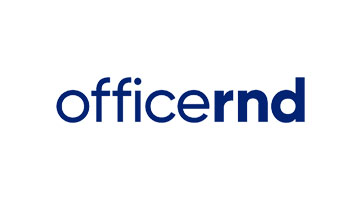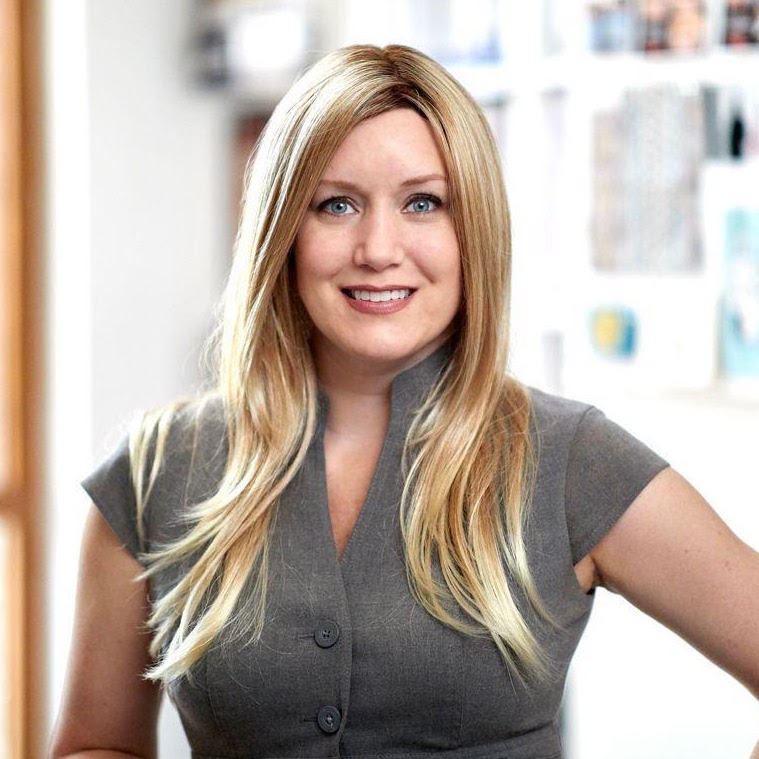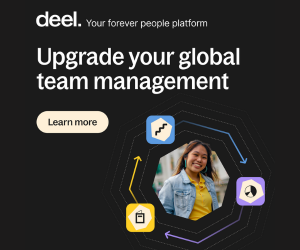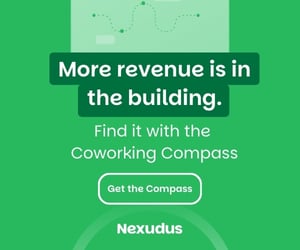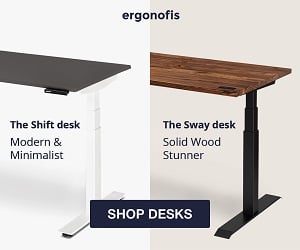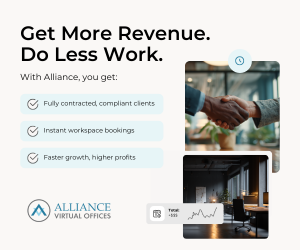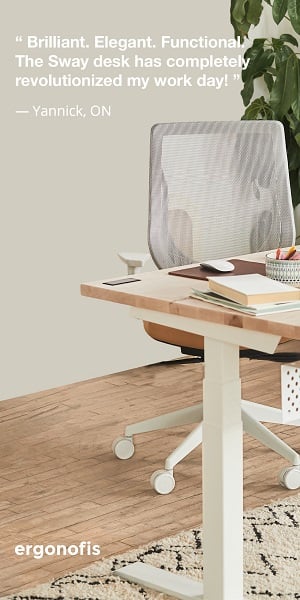About this episode
Kelly McEachern, Senior Interior Designer in the Perkins&Will Austin Studio shares why “workplace personas” are integral to designing happy, healthy workspaces. She talks in-depth about the discovery phase of a project and why it’s essential to involve as many different users in the process as possible. Ultimately, this approach leads to spaces that aren’t just beautiful, but also adaptable, resilient, and human-centered.
What you’ll learn
- Human-Centered Design
- Perkins&Will’s workplace personas: Identifying the evolving user types and the best work settings for each.
- Equity & Inclusion in Workplace Design
- Resilient Workplaces & Recent Best Practices
- Perkins&Will’s commitment to research and data-driven strategies in creating return-to-work plans for clients
- Adaptable Design Solutions — Planning for Multiple Futures
Intro [00:00:00] This was absolutely something that we’ve always been fascinated with, the different personas within the workplace and in how their needs and requirements differ and how the space can respond directly to those needs. But one thing that we have been bringing to this discovery process is it’s not just about where you are. It’s also about the type of work that you are conducting.
Jo Meunier [00:00:45] Hello and welcome to the Future Work podcast by Allwork.Space on Jo Meunier. And today I have the privilege of speaking with Kelly McEachern, who is the senior interior designer in the Perkins’ and Will Austin studio and regional resource for the firm focused on workplace strategies.
Jo Meunier [00:01:01] First, I’d like to give a quick shout out to our podcast sponsor Office R&D, who helps make these episodes possible. Office R&D, the leading management platform that can help flexible space operators free up valuable time by automating admin tasks and helping them make data driven decisions so they can spend more time focusing on growing their brand and engaging with their community. So, if you’re Flex space operator, head over to office R&D to book a demo with the team and try out for yourself.
Jo Meunier [00:01:26] Design impacts all of us. Whether you use the office once a month or every day, we all interact with these spaces in some form or other. The best spaces are the ones that quite simply, give us what we need to get our jobs done. Kelly’s work is focused on enhancing the pre-designed discovery phase of each project to align the client’s unique business strategies and goals with the planning and design, creating beautiful interiors just isn’t enough. Allwork.Space must reinforce an organization’s culture and values with human centered solutions to connect the users and their specific work functions.
Jo Meunier [00:02:00] So if you’re wondering how that all works in practice and how it connects to the future of work, you’re about to find out. So welcome, Kelly, and thank you for joining us on the podcast today.
Kelly McEachern [00:02:09] Thanks so much for having me.
Jo Meunier [00:02:12] Okay, right. We’ll dove straight in. First, I wanted to take a little bit deeper into your workplace design focus. And as we know that design is much more than just a pretty space. But for those of us who don’t see what goes on behind the scenes and in the early stages of the design process. Can you tell us a little bit about your focus on the pre-designed discovery phase and what that means?
Kelly McEachern [00:02:34] Sure, absolutely. Well, I am an interior designer by practice and by education. But at Perkins and well, we’ve also got a very in-depth research group workplace strategy team that helps kind of bring all the pieces and parts together for again, that of course, beautifully designed space, but one that that functions and is a direct response to the individual organization and their team members and their specific workplace needs. So, our process really dives deep into discovery, understanding not only the organization, but the type of work that is conducted and what these team members really need day in and day out to perform their best. Mm-Hmm.
Jo Meunier [00:03:32] So you must spend quite a lot of time with the teams beforehand, just finding out exactly what they need and how they work before you can then present solutions to them.
Kelly McEachern [00:03:41] Yes, absolutely. We’ve got a series of tools and interaction opportunities for different team members at different levels, including change management process that really helps us bring all the individual user types along in the decision process and what to expect and how are we doing along the way? And where do we need to make some modifications or adjustments?
Jo Meunier [00:04:15] Yeah, OK. And you mentioned before that a lot of your work is about human centered solutions, and to me, it feels like you really start with the people. You figure out what they do and what they need from their environment, and then you sort of build the space around them almost from the inside out. It is that it in a nutshell, yes.
Kelly McEachern [00:04:35] Yes, pretty much. We’ve been working quite a bit with understanding different user type categories, what that means to the space that needs to be provided and really catering those descriptions and results to exactly the specific team, the products or process that they work through, as well as how we reinforce the larger overall goals and envision for the organization.
Jo Meunier [00:05:11] Mm-Hmm. Yeah. And how much does data play a role in that? And I know that my colleague Frank Cottle, would always ask that question because his mantra is getting the data because it’s the data that tells us how the space is being used, how we interact with it, and that informs all the future planning and design decisions. So how does data, how did you use it in your work and how does it drive the planning and design of the space?
Kelly McEachern [00:05:35] Yes, absolutely. Data driven results is how we will come to a solution that helps us. Take some of the guesswork out of the process and the recommendations. Also, some of the fear and the change process and all of that, the data is what really gives us that path moving forward. So what’s interesting is we have a lot of different data sources benchmarking kind of the latest and greatest that our clients are doing and what we’re helping, you know, internationally and in and nationwide what we are doing for different client types, as well as surveying our end users and all of their team members and also workshopping and really coming up with some ways that we can discuss, you know, not just throwing questions out and getting the responses back, but really work through some topics together. And then I think the important part is taking all those things and cross referencing, comparing, seeing if we got different results from a survey versus a workshop. And often we do. When you can discuss rather than just answer questions, you might see that the data really lead you in new and different directions. And we love that process to really understand how it unfolds.
[00:07:20] Yeah. So, you could start with one idea and end up with something completely different based on all the different workshopping that was a term used. Well, what does that mean? What is that?
Kelly McEachern [00:07:30] So we can either. We often do leadership workshops, which is where we get together and almost work out all the topics, discussions. We discover some things that maybe the organization didn’t even know they wanted to do and, you know, highlight ways we can really make improvements. What should change, what should stay the same? What culturally needs to be the focus and how we can really engage team members in the process. And then we can even break that down further, either have departmental workshops, each team and how they work differently really let them discuss together. Brainstorm together this these sessions, it’s important not to come in with. Pre-determined solutions or ideas, but just let these individuals discuss and come up with the ideas that are most relevant to them and their work. So, we’ve even had some opportunities to workshop with every team member in the organization. So that meant breaking it down to several different sessions. And, you know, especially in the change management process here from everyone. What are the concerns? What do we need to address and how can we best include everybody in that?
Jo Meunier [00:08:59] Yeah, that sounds like it’s quite a long process is it can be roughly how long does it take?
Kelly McEachern [00:09:06] It depends on the size of the organization, but yeah, I think it is very important. Your typical design process, these discussions, this discovery change management process really needs to start long before your first programing and design sessions. This is important to. Not rush the discovery portion, but make sure you have the most relevant and the opportunities to really achieve what you need to achieve. Yeah.
Jo Meunier [00:09:47] And how has that changed since COVID came along? I imagine before you’re able to get together with lots of people in a space and talk to them face to face. Things are quite different now.
Kelly McEachern [00:09:58] Very much so.
Jo Meunier [00:10:00] Yeah.
Kelly McEachern [00:10:01] You know, we’ve learned how we can have some of these sessions virtually. I still prefer to be in person. Of course, I think that’s where you get people in some of the quiet individuals who aren’t as participatory. But virtually, we’ve got some tools now that we’re using to make sure that we hear all the different voices, even if we can’t be in the room at the same time. And moving on to an article that you did recently with my colleague Kate Tattersfield, and you talked about personas. And that was a fascinating insight. Can you tell us more about why it’s so important to design for different personality types and how you go about doing this?
Kelly McEachern [00:10:49] Sure. This was absolutely something that we’ve always been fascinated with the different personas within the workplace and in how their needs and requirements differ and how the space can respond directly to those needs.
Kelly McEachern [00:11:06] But currently of how should we work? How will we work? Will I work from home in the office or a little bit of both has really brought us this opportunity to redefine that process. Personas are too often we’re just considering a virtual team member, a in person team member and then a hybrid team member. But one thing that we have been bringing to this discovery process is it’s not just about where you are. It’s also about the type of work that you are conducting and the, you know, preferences on how if I’m working on individualized work, maybe I need focused space, individualized space. But that doesn’t necessarily mean I have to work from home. We need to provide those spaces in the office as well. Collaborative work needs yet a different kind of setting at the office. Access to team members. To leadership, to the overall company, culture and mission and values. You know, we all need to have that reinforce why we work, where we do and who we work for is important.
Kelly McEachern [00:12:29] And coming into the office and having all those things reinforce for you and having the right setting for the type of work you need to conduct is really part of this what we call our predictive programing tool. So, by identifying the different user types which differ per organization as to the number of different persona types may vary as well.
Kelly McEachern [00:12:56] We’re then able to assign square footage needs not just overall total square footage per person, but even the different square footage of types of spaces, the different zones, and ratios that we need for each of those persona types that we can then factor into an overall programing tool that helps us study different scenarios and learn what the impacts are to the overall real estate needs for the organization.
Jo Meunier [00:13:28] And I mentioned for the people using the space as well. You mentioned a moment ago that you prefer the face-to-face workshops because you’re able to hear the quietest voice. And in the workplace, you have people that enjoy a bubblier environment and then you have people that are a bit more reserved, a bit more introverted, perhaps like quieter spaces. And so, I imagine that gives you an opportunity to hear from everybody and design a space that’s suitable for lots of different personalities.
Jo Meunier [00:13:56] And in that, in the article that you did recently, you talked about neurodiversity, and we had an episode on the podcast recently with David Coleman. He put he developed wellness pods to enable people, especially those who are neuro divergent and highly sensitive to certain environments, to work more comfortably and productively. Can you tell us how neurodiversity fits into your work, Perkins&Will?
Kelly McEachern [00:14:27] Yeah, absolutely. I think overall, this last two years has really given us an opportunity to rethink the workplace in ways that allow us to create a better work environment with new considerations that maybe should have been done a long time ago. But agile working and variety within the workplace again has been something we’ve always been interested in. But we’re seeing now with the change in how many people are in the office and in what kind of work is being conducted in the office. It’s more important to create a variety and choice about work settings. This allows us to really think about diversity and creating opportunities for a variety of different user types.
Kelly McEachern [00:15:26] So having those spaces where you can close the door, get some focused work done in in a quiet space, and not have a lot of hustle and bustle around your open office environment, but really creating these zones that respond to different types of work needs is important. Access to natural light, to quiet, to a place that you can have solidarity with team members or alone. And of course, collaboration and even social setting. Lot of opportunities there to meet a lot of different needs for different individuals.
Jo Meunier [00:16:16] And given the situation we’re in right now, I should imagine in your line of work, you must be extremely adaptable. One minute, everyone’s back in the office and in the next minute everyone’s working from home again. And then and then there’s this sort of middle area of hybrid work. So, does that mean you when you’re working with clients, does that mean that you must plan and design the sort of multiple futures?
Kelly McEachern [00:16:40] Absolutely. Even as I spoke about the predictive programing tool, that is one aspect of the tool is looking at these different zones of spaces, how much you need of each of those zones and then how that space can be adapted and changed over time to, you know, respond to the unknown. Again, we’re constantly in that going into the office, coming back home, going to the office, coming back home, that that ratio keeps changing and seems like it’s going to continue to change.
Jo Meunier [00:17:15] So with all these, this constant change that’s going on and return to work plans and then everyone’s back home again. How do you deal with this unpredictable nature that must be quite a challenge for you?
Kelly McEachern [00:17:29] It can be. Yes, I’m sure it’s a challenge for the companies we work with as well. But I think as we really look at these tools we’re providing, it puts us a step ahead in anticipating a change in adoption. And overall, you know, lots of products have come on the market that allow us some of that flexibility and change ability of the work environment. But I think the some of the challenges that we have seen in the built environment is, you know, how to have those power solutions, technology solutions, air distribution that allows us to be flexible with the spaces we provide. So, we’ve been working on some tools. We’ve been working with even some manufacturers on some solutions that allows that for that flexibility and adjustability of the space.
Jo Meunier [00:18:35] And I imagine some measures that came in at the beginning of the pandemic and things like the social distancing and the screens and so on. I should imagine some of these things will become part of the longer term in terms of design. Do you see that being big changes in that area or do you think we’re going to be sort of staying with some of these wellness changes for the foreseeable future?
Kelly McEachern [00:19:00] I would love to see us kind of stay consistent and really learn from this, these last few years, the change we went through. I’m excited to see a little more space, a little more diversity of space types in the work environment. I’d love to see those seas of workstations and inventing stations. A little variety, a little mixing it up, so as we see some seat sharing coming in and using a different type of space, not an office or a workstation every day. I’m happy to see just some beautiful office environments that aren’t just rows and rows and rows of desks.
Jo Meunier [00:19:51] Yes, definitely. Me too. And in your own company at Perkins&Will, how are you adapting your own workplaces to enable your, your colleagues and employees there to keep working and keep working in a way that’s comfortable for them?
Kelly McEachern [00:20:09] We’ve really allowed some flexibility and changed our approach as far as allowing individuals to come into the office to conduct those tasks where they need to have an in-person meeting. They need to use the materials library. That’s very important in our line of work as or technology or what have you. But if you have, you know, several calls that is best suited from a remote location such as your home, we think that’s great. Find the right setting for the task, whether that’s a variety of settings within the office, at home or even in a third place.
Jo Meunier [00:20:57] Yeah, absolutely. And one I was reading an article earlier and one something that you mentioned was that if we can put a positive spin on the experiences of the past couple of years, the last couple of years, so is that we have a real opportunity to create a better normal. And I think that she’s such a great way of looking at it because, like you say, one thing we’ve all benefited from is this extra flexibility and it’s really put the spotlight on, you know, we’re human beings and we crave the social interaction with each other in the spaces that enable that. But we also sometimes need a quiet place to just retreat due and go and get work done, know, meet a deadline or something like that. So, I think this ability for people to move around more and go to places that suit their needs and their personality, the fact that we’ve now been pushed down that road is only a good thing.
Kelly McEachern [00:21:47] Yeah, I absolutely I do love that quote. A new and better normal is what we all needed. It was it was time. It was a painful way to go about it. But yeah, we’re here now. So, you know, really in looking back at the different stages we’ve all gone through, either end of the spectrum is not ideal kind of being forced to work at a or conditioned, I should say, not force condition to work at your desk all day, regardless of the type of task you must perform, is not ideal. Working from home all day, every day not ideal, either getting the best of both worlds and being able to curate your week, tailor it to what you have going on your schedule and being trusted with your managing your own work and your time to do just that is really where we’re going to find happy content employees who love their jobs.
Jo Meunier [00:22:55] Absolutely. And we’re nearing the end of our episode today. I’d love to know your thoughts on what’s coming next in the world of design. And given where we are right now and how you see things evolving over the next few months in the next couple of years, what are your thoughts on that? Do you have any takeaways for us?
Kelly McEachern [00:23:12] Sure. I mean, I think we are at a point where if we do this right, we prove it successful. We have the right technology, the right tools, the right attitude. We really will have better work environments moving forward, better organizations moving forward. What I think is important is not to try to force old ways in this new work environment, but really to allow adaptation, allow change and adjustment to happen naturally and be ready to make mistakes and be ready to make further adjustments.
Kelly McEachern [00:23:54] We were going at this the best we can, and we’ll learn along the way. We need to respond to those learning opportunities and be ready to, you know, pilot an opportunity here, a pilot, a new work model and check in with people. See, is it going well? What would you change and in allow change if I have team members who’ve decided they’re coming in to work into the office two or three days a week and later, we decide either for their own preference or production levels are not what it should be? You know, be ready to make those adjustments and allow team members to know that this is a process and evolving process. And so, we’re not committing to anything. That’s the great thing about this flexibility and adaptability is we can allow it to organically develop and into the right direction.
Jo Meunier [00:25:04] Yeah, that’s what I took out of this is it’s all about the flexibility and the adaptability. And about the people, it’s a very human centered approach, as we talked about in the beginning. So, thank you, Kelly, for taking the time to come and chat with us today. I’ve really enjoyed it. And before we go, could you please tell us how our listeners can connect with you and find out more about Perkins&Will.
Kelly McEachern [00:25:25] Sure. Yeah, absolutely. Perkins, as well as a large international firm with a lot of different practice sectors, mind being workplace strategy and corporate interiors. So, Perkins and Perkins will dot com as well as on Instagram, Perkins and well, you can find us there. Love to connect.
Jo Meunier [00:25:52] Fantastic. And just before we go just to say that the article, we mentioned earlier about work personas, that’s on the Allwork.Space website, and we’ll also include it in the resources section of this episode. And once again, thanks so much to Officer R&D for sponsoring this, this episode of Making Them Possible. And that’s it. So, thank you, Kelly. Have a wonderful rest of the day, and we hope you’ll join us again soon.
Kelly McEachern [00:26:14] Yes, I’d love to thank you so much.
Jo Meunier [00:26:17] Thank you. Speak to you soon.
Kelly McEachern [00:26:19] Bye.


 Dr. Gleb Tsipursky – The Office Whisperer
Dr. Gleb Tsipursky – The Office Whisperer Nirit Cohen – WorkFutures
Nirit Cohen – WorkFutures Angela Howard – Culture Expert
Angela Howard – Culture Expert Drew Jones – Design & Innovation
Drew Jones – Design & Innovation Jonathan Price – CRE & Flex Expert
Jonathan Price – CRE & Flex Expert
